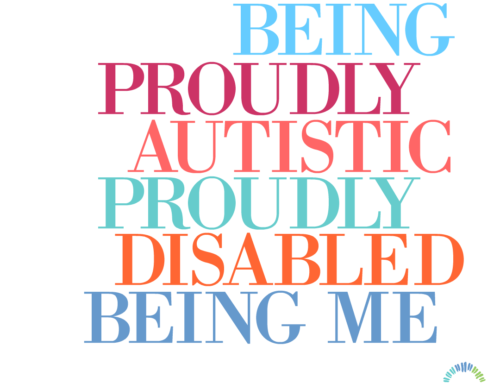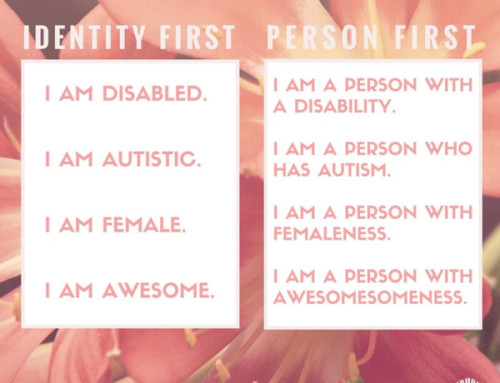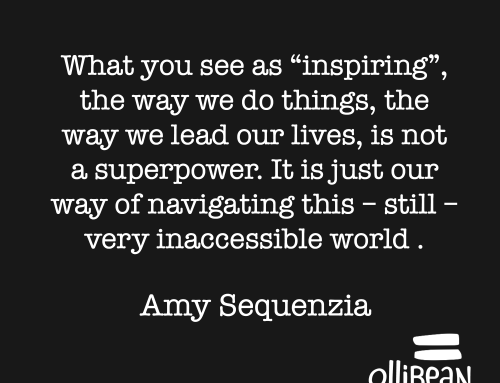Most people recognize the international symbol for disability: the stick figure seated in a partial circle, drawn in white on a blue background. Many feel that the symbol, which has come to be known as the International Wheelchair Icon, or the International Sign of Access needs a redesign. In 2011, Cambridge, Massachusetts resident Sarah Hendren decided to take on the challenge.
“The figure is static, wooden, with the squared-off geometry of machinery. The body is synonymous with the chair,’’ she told The Boston Globe of the current access sign. She also talked about wanting her design to explore ideas of who is disabled, as the current symbol doesn’t reflect the idea that many disabled people who require special access considerations or accommodations don’t use wheelchairs.
Her revisioning of the symbol looks like someone in a wheelchair race. The wheelchair in her design denotes disability, but more importantly it gives the sense that the disabled person is “independent, active and moving forward via their own power.”
Because of fears that using anything but the orginal Rehabilitation Association design will violate the Americans with Disabilities Act, people are reluctant to adopt redesigns of the International Sign of Access. However, state and federal officials say that slight variations to the symbol are permissible, as long as it’s still recognizable. Hendren didn’t wait for official permission from anyone before spreading her own design around the streets of Cambridge. She created stickers featuring her design, which looks like someone in a wheelchair race, and put them up over signs in her town that featured the standard symbol. Insisting that she wants to evolve the symbol, not replace it, she left the stickers transparent so that the original symbol was still visible.
Sarah’s risky but proactive approach paid off. Not only did Brian Glenney, an assistant philosophy professor at Massachusetts’ Gordon College, have the stickers put up around the campus, but, through his network, he eventually got contact Victor Calaise, commissioner of the New York mayor’s office for people with disabilities, involved. Hendren’s updated design of the International Sign of Access will appear around New York starting this summer.
Hendren’s design has also been adopted been the following:
1. The city of Malden, Massachussetts
2. University College of Medical Sciences & Guru Teg Bahadur Hospital, Delhi, India
3. Nissan, on its NV200 taxi
Congratulations, Sarah Hendren!











Hey, I kind of like this idea.